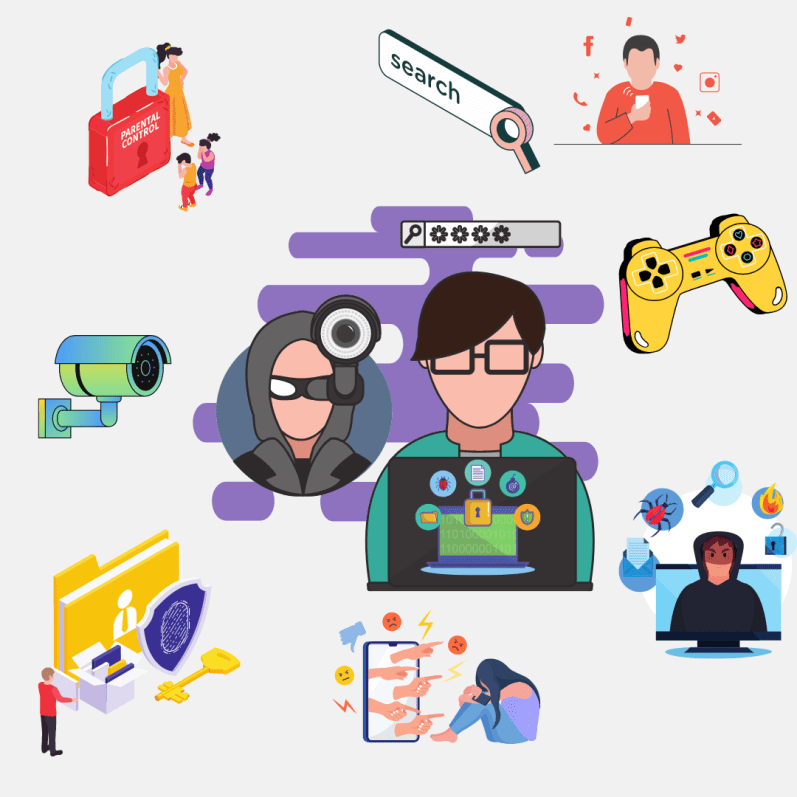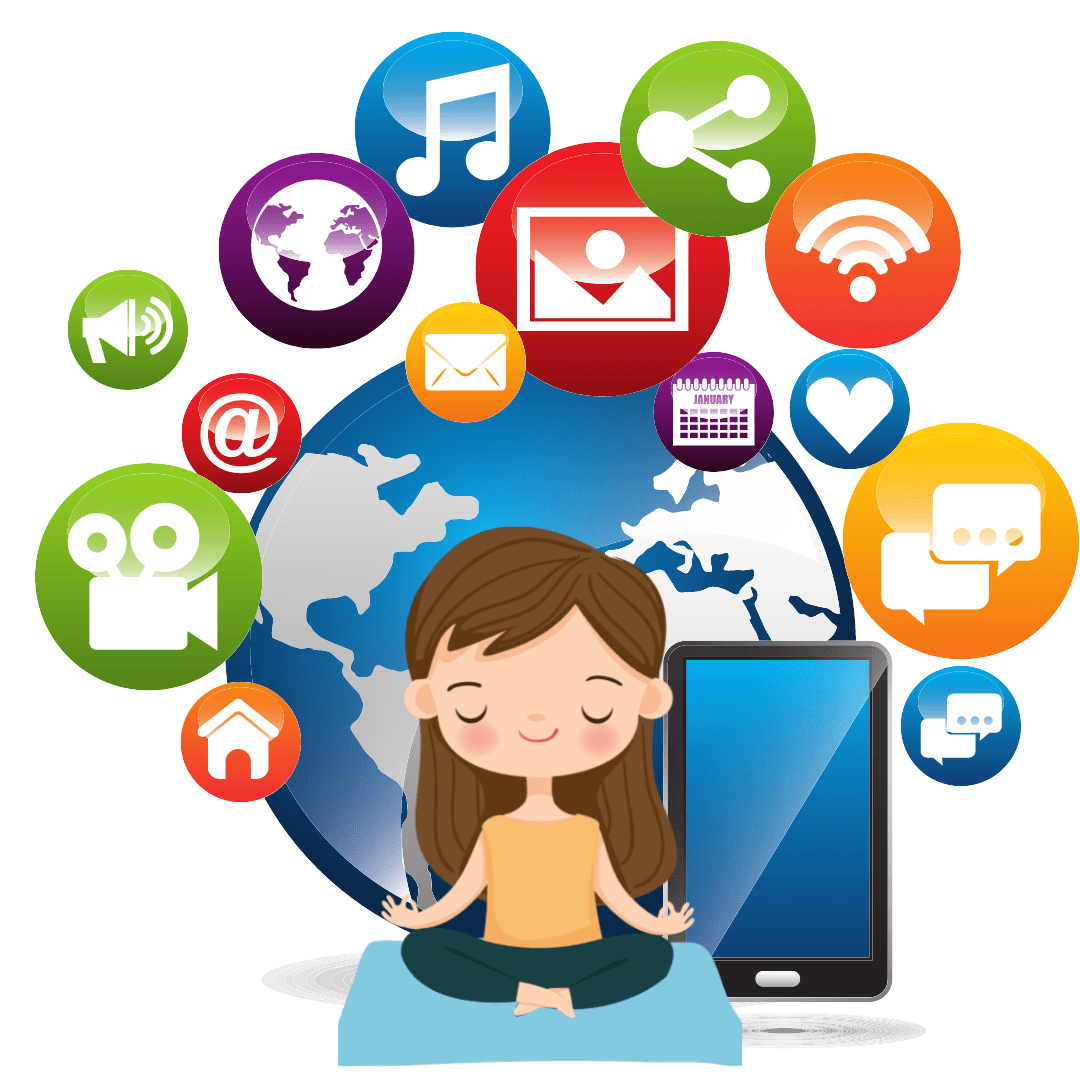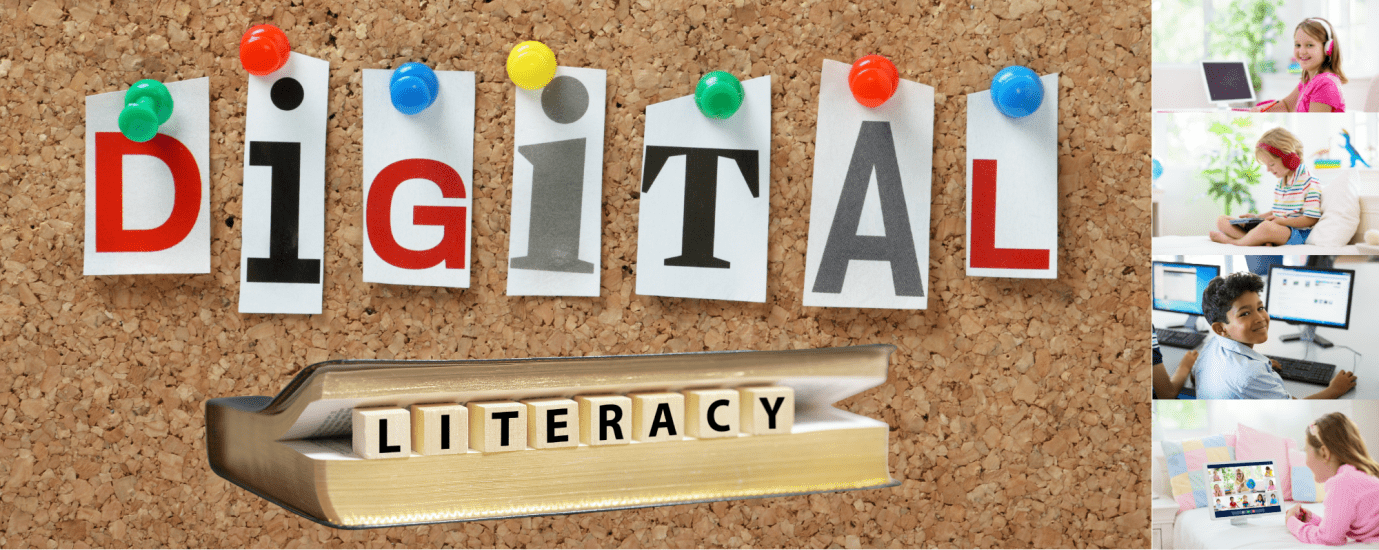Digital literacy is an essential skill for kids today. With the world becoming increasingly digitalized, having the right digital knowledge is no longer a choice but a necessity. We live in a time when kids have access to a variety of digital tools and technology. The internet, smartphones, tablets, and computers are all the rage. The world of technology has opened up a world of possibilities and kids must be equipped with the right skills to make the most of it.
Parents need to understand the importance of digital literacy and provide their children with the right guidance to maximize their online potential. Parents must ensure that their children are digitally literate and adept at handling the various technologies available to them.
With the right guidance, children can gain the confidence and knowledge to use digital devices for fun, learning, and staying connected in a safe, responsible way. This blog provides an overview of the importance of digital literacy for kids, as well as strategies and tips to help them develop the skills they need to be successful in the digital age.
What is Digital Literacy?
Digital literacy is the ability to use digital technology, communication tools, and networks to access and manage information. It also involves understanding the ethical and social issues related to technology use. Digital literacy is a broad term that encompasses a range of skills, from basic computer literacy to more advanced skills in programming and coding.
Digital literacy is more than just knowing how to use a laptop or smartphone. It about understands the ethical, legal, and cultural implications of using technology and the internet. It is about being able to safely navigate the online world and consume digital content responsibly.
Digital literacy may be necessary for both school and extracurricular activities, like researching a science project, filling out online school forms, or participating in online sports teams.
What are Digital Literacy Skills?
Digital literacy skills can be divided into three main categories: basic technology, communication, and information.
Basic Technology:
Basic technology skills involve the ability to use computers, phones, and tablets to access information and complete tasks. This includes the ability to use software, create files and documents, and navigate the internet.
Communication:
Communication skills involve the ability to use digital communication tools, such as email, social media, and instant messaging. This also includes the ability to participate in online conversations, use digital media to create content, and share information.
Information:
Information skills involve finding, evaluating, and using information from digital sources. This includes the ability to search for information online, assess the accuracy and reliability of the information, and use the information to solve problems.
Benefits of Digital Literacy for Kids
- Digital literacy offers many benefits to kids. It provides a useful set of skills that can be used throughout their lives, from school, extracurricular activities, and social connections.
- Digital literacy also allows kids to explore and create using technology, improving creativity, imagination, and problem-solving skills.
- Digital technology is also helpful for staying connected with family, friends, and others. In addition to providing these benefits, digital literacy allows kids to have fun while exploring new ways of using technology.
- Kids can benefit from building these skills and using technology in a variety of ways.
Digital Literacy Skills to Teach Kids
When we talk about teaching digital literacy skills to kids, it means helping children develop the knowledge and abilities to navigate and make sense of the digital world around them.
Digital device skills
Knowing how to use devices, like computers, tablets, and cell phones, to navigate, send and receive information, and connect with others.
Computer skills
Understanding the basics of computers, like how they work, what a browser is, and how to use a word processor or spreadsheet.
Digital Communication Skills
Understanding the different types of communication that can happen digitally, like texting, email, and social media.
Digital content skills
Knowing how to find and use information, like using websites as a source for research.
Digital knowledge skills
Understanding how technology works, how it can be used for different purposes, and the history of technology.
Social media skills
Understanding how to use social media to connect with others, use tools like hashtags, and post on social media safely.
Digital collaboration skills
Knowing how to work together with others digitally, including collaborating on projects, setting up online collaborating tools, and participating in online communities.
Digital career skills
Understanding how to use technology as part of a career, like managing email in a work environment, or using social media to market a business.
Digital life skills
Knowing how to use technology to accomplish daily tasks, like grocery shopping online or setting up an online bill payment system.
Digital safety skills
Understanding how to stay safe when using technology and setting boundaries for what is acceptable and what is not when using technology. These skills include:
- Respecting privacy
- Protecting identity
- Preventing cyber bullying
- Staying safe online
Tips for Teaching Digital Literacy
Teaching digital literacy to kids can be a daunting task for parents. Here are some tips to help parents teach their kids digital literacy skills:
Start Early
It is important to begin introducing the basics of digital literacy skills to kids as early as possible. This allows them to develop a strong foundation and builds confidence as they grow.
At Skoolofcode, start online coding classes for kids as young as 6 years old. The classes aim to help children develop their digital literacy skills and learn basic coding concepts. This can be a great way to introduce children to the world of technology and help them develop valuable skills for the future.
Set Boundaries
It is important to set appropriate boundaries for kids when it comes to digital literacy skills. This includes setting rules and regulations around technology use, including the type of content kids can access.
Provide Opportunities to Use Technology
While it is important to set boundaries and rules for using technology, it is also important to provide opportunities for kids to use technology. This can include letting them use technology at home, participating in extracurricular activities that use technology, or exploring technology at a library.
Help Kids Make Connections
Kids should be encouraged to make connections with others through technology. This includes making friends with people online, joining online communities, and participating in social media.
Encourages Creativity
Technology is a useful tool for creativity. Kids can use technology to create art, music, games, and more. This encourages creativity and allows kids to explore technology in a creative way.
Let Kids Explore
Parents should encourage kids to explore different ways technology can be used. This allows kids to experiment and explore new ways technology can be used.
Help Kids Explore Different Devices
Kids should have access to different types of devices, allowing them to explore and experiment with different devices and their uses. Have kids explore different devices, allowing them to experiment with different devices and their uses. This will allow them to develop skills for a variety of devices.
Model Good Behavior
Model good digital behavior for kids. Show them proper etiquette for using digital communication tools, such as email and social media.
Encourage Participation
Encourage kids to participate in online conversations and create content. Show them how to use digital media to express their ideas and connect with others.
Teach Problem-Solving
Teach kids the basics of problem-solving. Show them how to use digital resources to solve problems and complete tasks.
Resources for teaching Digital Literacy
Find a Digital Literacy Resource
There are a variety of resources available for parents to help them teach their kids about digital literacy skills. These can include books, online resources, and apps to help kids explore and develop skills with technology.
Stay Up-to-date on Technology
It is important to stay up-to-date on the latest trends in technology and how they can be used. This allows parents to help their kids explore the latest technology, and how it can be used.
Help Kids Find the Right Balance
While it is important to help kids develop skills with technology, it is also important to help them find the right balance. Kids should not be spending all their time using technology, but they can use it as a tool to accomplish a variety of tasks.
Seek Outside Help
If you feel like you need help with teaching your child about digital literacy skills, there are resources available to help. This can include talking to your child’s teacher, or finding an outside resource to help with digital literacy skills.
Discussing Digital Safety with kids

As parents, it is important to talk to your kids about digital safety. This includes setting boundaries, like what is and isn’t acceptable to share online or what kids should or shouldn’t be looking at online. It is also important to share the dangers of certain online activities, like clicking on suspicious links and staying safe when online shopping. It is also important to teach kids to respect others’ privacy and to be aware of cyber bullying. This includes encouraging kids to report bullying online, teaching them to avoid online predators, and staying safe as a kid online. Parents should have open and honest conversations with kids about digital safety. This will help kids understand the importance of digital safety, and allow them to feel comfortable asking for your help with certain online activities.
Promoting Digital wellbeing with kids
As parents, it is important to help your kids understand the concept of digital wellbeing. Digital well-being refers to the balance between the benefits and drawbacks of technology use in our daily lives. It encompasses the impact of technology on our physical, mental, and emotional well-being, as well as the impact on our relationships and social interactions. Digital well-being also includes the ability to manage our technology use in a healthy and balanced way, and to use technology in a way that enhances our overall well-being.

How can parents promote digital wellbeing with kids?
There are several ways that parents can promote digital well-being with kids:
- Set clear guidelines and boundaries for technology use
This can include setting time limits for screen time, creating designated technology-free zones in the house, and setting rules for appropriate content and behaviour online.
- Encourage a balance between online and offline activities
Parents can encourage kids to engage in a variety of activities, such as playing sports, reading, and spending time outdoors, in addition to using technology.
- Lead by example
Parents should model healthy technology use habits for their kids, such as putting down their own devices during meals and family time, and taking regular breaks from technology.
- Educate kids about digital safety and responsibility
Parents should educate kids about online privacy, cyber bullying, and the potential risks of sharing personal information online.
- Communicate with kids
Parents should have open and honest conversations with kids about their technology use and any concerns they may have. This can help build trust and understanding, and make it easier for kids to come to parents with questions or problems.
- Encourage healthy sleeping habits
Limit or remove screens in the bedroom and establish a bedtime routine that doesn’t include screens.
- Encourage social interaction and teamwork
Encourage kids to engage in activities that involve social interactions and teamwork, such as sports teams, clubs, or volunteer groups, to counterbalance the solitary nature of many technology-related activities.
Conclusion
Digital literacy is crucial for children in today’s society as technology plays an increasingly important role in their daily lives. It not only helps them navigate the digital world safely and responsibly, but also equips them with the skills they need to succeed in the future. Parents can help promote digital well-being for kids by setting clear boundaries and guidelines for technology use, educating them about online safety, and modelling responsible behavior themselves. Additionally, providing opportunities for kids to learn about and engage with technology in a meaningful way can help them develop the skills and knowledge they need to thrive in the digital age.
In summary, digital literacy and well-being is a process and parents have a crucial role in helping their kids navigate the digital world. By providing guidance and support, parents can help kids develop the skills and knowledge they need to thrive in the digital age.
So, if you’re a parent, don’t wait any longer! By booking a trial class with Skoolofcode, you can help your child unlock the digital world and develop the skills they need to thrive in the digital age.
Don’t miss out on this opportunity to give your child a head start in a world that is becoming increasingly dependent on technology.
Ms.Manpreet Virk, Head of E-learning and an educator at SkoolofCode with a degree in M.Phil and Master in Computer Science. She is passionate about learning and teaching young minds.

